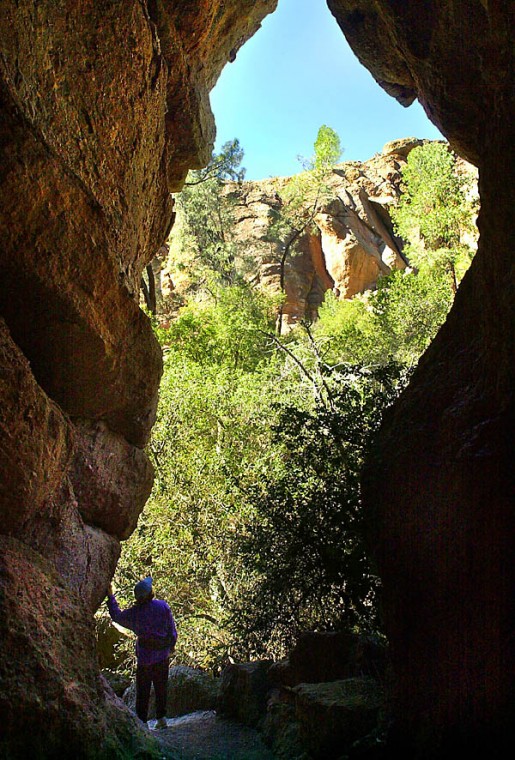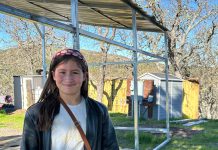
The National Park Service is already preparing for the 100th
anniversary of Pinnacles National Monument in 2008.
”
We want to remind people the Pinnacles National Monument can be
around for another 100 years,
”
said Park Ranger Richard Banuelos of the interpretive division,
who is also spearheading a campaign to put together the monument’s
history for a book.
In the last year, Banuelos began the process of meeting with
land management agencies and historians to research and collect the
history of the monument’s past 95 years.
The National Park Service is already preparing for the 100th anniversary of Pinnacles National Monument in 2008.
“We want to remind people the Pinnacles National Monument can be around for another 100 years,” said Park Ranger Richard Banuelos of the interpretive division, who is also spearheading a campaign to put together the monument’s history for a book.
In the last year, Banuelos began the process of meeting with land management agencies and historians to research and collect the history of the monument’s past 95 years.
“We’re hoping to find people who can tell us the stories of the park as well stories that relate to the people who lived in area during the time of its designation,” he said. “We know there are families still around today who have direct ties to those who were promoting the area and have helped establish the area as a national monument.”
Local families such as the Bacons, Schmidts and Hawkins have played a big part in the park’s history, he said.
“We’re just beginning to document the information to put it together as a book for publication,” Banuelos said.
With the exception of photographs and some information donated by the San Benito County Historical Society, many of the monument’s stories were never recorded, he said.
“Most of what we have learned is through oral history,” he said. “We’re putting together the pieces of the puzzle to understand what is so special about the area.”
The diverse group of individuals and organizations working on the project have one thing in common, Banuelos said: “They all believe this is a special place.”
More than 200,000 people per year visit the monument to admire its massive rock formations, sheer-walled canyons and 24,000 acres of diverse wild lands and wildlife. Rock formations divide the monument into east and west districts and are connected by more than 30 miles of trails.
“We’ve learned during the 1930s when the CCC (California Conservation Corps) was formed that many people came here from Oklahoma and Texas,” Banuelos said. “They left behind a vast, rich significance and became part of a national legacy.”
Many stories revolve around relatively less-famous individuals such as Vasquez, the reputed outlaw.
“We have an account that he may have hid in the caves,” Banuelos said.
“There is a Native American presence in the area,” Banuelos said. “And we’re trying to get a better picture of it, which is why we are working with Ann Marie Sayers (activist for California Indian Rights). We’re also working with archeologist Ruben Mendoza.”
When the new facilities are completed, an exhibit will tell the monument’s story, Banuelos said.
“People may be thinking they come here to hike, but they’ll go away learning about its history, and maybe they’ll appreciate the quality of San Benito County as well as the monument,” he said.
Anyone with information or photos to share should call (831) 389-4485, ext. 266.









